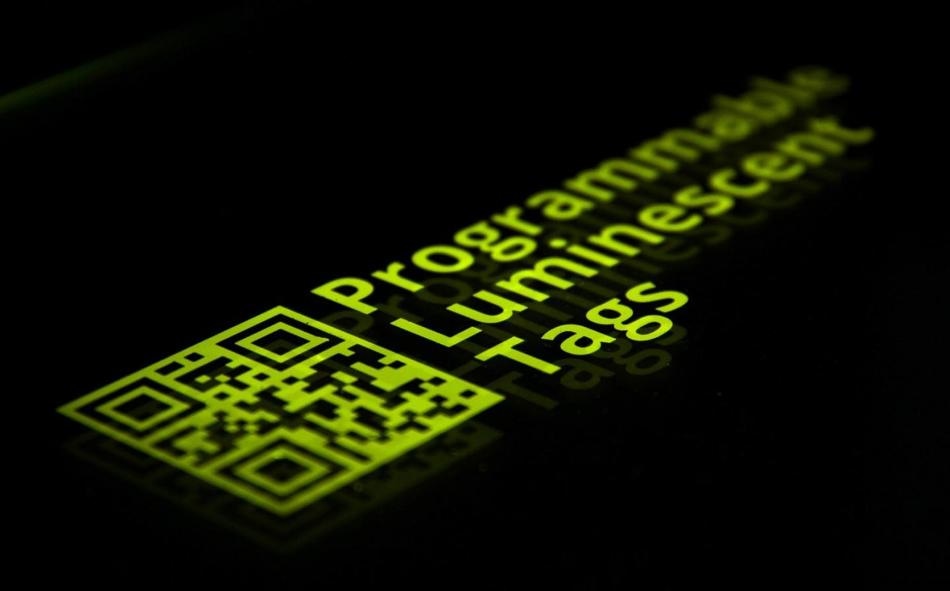Feb 4 2019
Professor Reineke and his LEXOS team at TU Dresden investigate basic plastic foils possessing a thickness of less than 50 μm, which is thinner than a human hair. Organic luminescent molecules are added into these transparent plastic foils. At the start, these molecules are in an inactive, dark state.
 A luminescent tag, contactless printed onto a plastic foil. The light emitting layer is thinner than a human hair. The imprint can be erased and replaced by another pattern. (Image credit: M. Gmelch and H. Thomas, TU Dresden)
A luminescent tag, contactless printed onto a plastic foil. The light emitting layer is thinner than a human hair. The imprint can be erased and replaced by another pattern. (Image credit: M. Gmelch and H. Thomas, TU Dresden)
By locally using UV irradiation, it is possible to change this dark state into an active, luminescent state. By laser writing or mask illumination, activated patterns can be printed onto the foil with a resolution that is similar to standard laser printers. Like glow-in-the-dark stickers, the patterns can be brought to shine and the imprinted data can be read. By using infrared light to illuminate, the tag is erased fully, making it possible for new data to be written into it.
The working principle behind these programmable transparent tags is based on the familiar oxygen molecule. The oxygen present in the plastic foil steals the light energy from the glowing molecules. UV radiation triggers a chemical reaction which effectively eliminates the oxygen from the layer. Consequently, the luminescent molecules are triggered and are able to produce light. The deactivation process with infrared light is based on a temperature rise of the foil, resulting in increased oxygen permeability and thus a refilling of the layer with oxygen.
These new tags can be made in any size. With the material costing less than two euro per square meter, it holds promise in a wide variety of probable applications: Information such as serial numbers, barcodes, or addresses can be concealed for on-demand readout only. Furthermore, these invisible tags could thrust anti-counterfeiting and document security to a totally new level.
Those invisible and re-writable tags can be used in a multitude of ways. We can manufacture such tags thinner than conventional barcode stickers. These tags can become a versatile alternative to many frequently technology-laden solutions for information exchange in our daily life. These luminescent tags make electronics obsolete at the location, where the information is stored. The development and optimisation of such systems open a broad research field bringing together material development, process engineering, and fundamental research in an interdisciplinary fashion.
Dr. Sebastian Reineke, Professor, LEXOS group, TU Dresden.